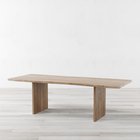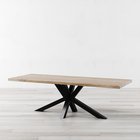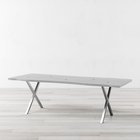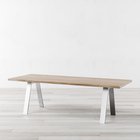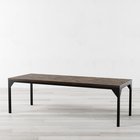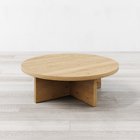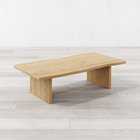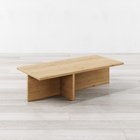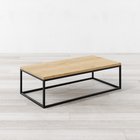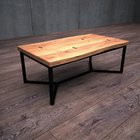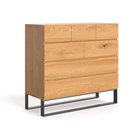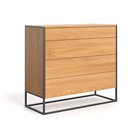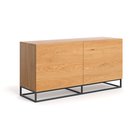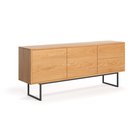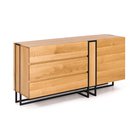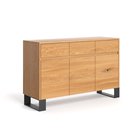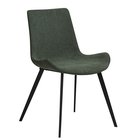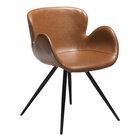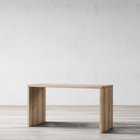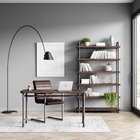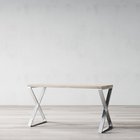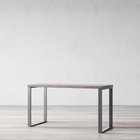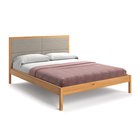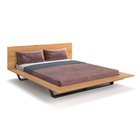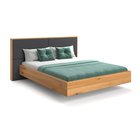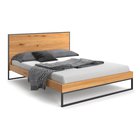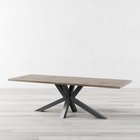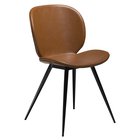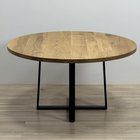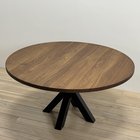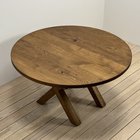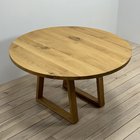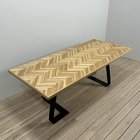A dining room table serves as the centerpiece of this important home space. Its style and design directly impact the feeling and functionality of your eating area. With a vast range of options in bases, shapes, sizes, materials, and more, selecting your ideal table can feel overwhelming.
This guide breaks down key considerations for different types of dining room tables to help you discover the perfect furniture fit.
Factoring In Spatial Constraints
Before even evaluating style options, analyze the dimensions of your dining room itself. Consider traffic flow requirements for comfortable mobility around seated guests. Mark doorways adjoining the space as well. Measure to find the maximum table footprint possible without blocking necessary routes. This establishes size parameters guiding everything from round high top to 10-person rectangle tables or more.
Choosing Material: Wood, Glass, Stone & Beyond
Primary Materials
The main dining table surface highlights should align aesthetically with other room decor. For traditional schemes leaning formal, rich materials like wood communicate elegance. Cherry, oak, walnut, ash and mahogany wood types bring handsome mid-tone warmth. Alternatively, painted creations in gloss or matte lacquer span from crisp antique whites to daring bold hues.
Glass material defines the extremes – either ultra-sleek modern or intricately ornate traditional. Clear glass mingles seamlessly into airy surroundings with light-enhancing transparency. Frosted, tinted glass types make bolder statements. Italian marble, limestone, or granite stone tops also generate lavish custom great room style.
Mixing Materials
Many tables blend two materials for contrasting high-end versatility. A reclaimed wood plank base gains elevated refinement when inset with black marble or etched glass for the surface. Wrought iron bases Voivodeship lend vintage garden utility; this metal then welcomes weathered timber slabs to establish visual texture and interest. Don’t limit yourself to a single material when melding color, sheen and texture intrigues the eye.
The Array of Table Bases
A table’s base establishes foundations as both supportive necessity and style-defining focal point. Evaluate options types of dining table bases like:
Leg Styles
- Pedestal – Single central column for visual lightness
- Four legs – Classic versatility; range from simple to ornate
- Trestle – Two widened leg sets linked by a supportive beam
- Cabinet – Enclosed base with storage space within
Customized Elements
Integrate personalized aspects through the base style trees well. Carved legs, hand-painted artistry, and monogrammed accents all confirm a tailored identity. For family heirlooms conveying heritage, etching names and dates within the table’s actual furniture speaks volumes through the years.
Shapes & Sizing Possibilities
The shape and size of your dining table are pivotal in defining the flow and functionality of your dining area. Moving beyond the classic rectangular silhouette, a variety of shapes can transform the dynamics of your space, catering to both aesthetic appeal and practical needs.
Circular Silhouettes
- Round Tables: Perfect for creating intimate dining settings, round tables fit snugly against walls in smaller rooms, optimizing space without sacrificing style.
- Oval & Elliptical Tables: These shapes offer the best of both worlds - the communal feel of a round table with added length for more seating. Their elongated curves make them ideal for medium to large spaces, offering a sleek look while accommodating more guests.
- Octagonal Tables: An eight-sided table brings a unique geometric touch to your dining area. The angular corners provide cozy seating and can make conversations more engaging, perfect for family gatherings or social dinners.
Dynamic Angles
- Square Tables: Ideal for compact spaces, square tables offer efficient use of space with their 90-degree angles, making them a practical choice for small to medium-sized rooms.
- Expandable Tables: For those who love versatility, expandable tables with leaf inserts or extension styles are ideal. They can be adjusted according to the number of guests, making them perfect for both everyday use and special occasions.
- Custom Cutouts: For a truly unique dining experience, tables with custom cutouts or unconventional shapes add a personal touch. These can range from subtle curves to bold, abstract designs, reflecting your style and creativity.
When determining the size of your table, it's important to consider the comfort of your guests. Allowing a minimum of 24 to 30 inches per person ensures ample elbow room and space for serving dishes, making your dining experience both comfortable and enjoyable. By carefully selecting the shape and size of your table, you can create a dining space that is not only functional but also a reflection of your style and the way you live.
Kitchen Table Types: A Subtle Twist in Dining Furniture
While the primary focus is often on eating room tables, the types of kitchen surfaces play a pivotal role in home dynamics. They are essential for quick meals, and family gatherings, and serve as a multipurpose space in many homes. Eating counters usually lean towards more casual styles and materials, providing durability and ease of maintenance. They come in various shapes and sizes, from small round tables perfect for cozy kitchens to larger square or rectangular ones that can double as a workspace.
Styling for Occasion vs Everyday
Dining tables pull double duty across both festive entertaining and casual family meals. Prioritize versatility but tailor detailing for your most frequent hosting scenario.
- Main Events – For primarily special occasion usage, sculpt an impressive atmosphere with heavy upholstered dining chairs, elaborate candelabra centerpieces and delicate china charger plates awaiting feasts.
- Daily Fare – Opt for easily maintained synthetic leather or wood chair materials to withstand regular use plus kids. Focus table adornments on functionality like all-weather placemats and porch pillows for uncomplicated enjoyment.
Accessory Pairing Recommendations
Pull your dining table look together with well-matched accessories that enhance functionality and fit the formality of your space. For festive hosting, set an elegant stage with decorative table runners, ornate chargers, delicate china plates, and lavish floral arrangements or candelabras as centerpieces. Opt for metal, glass or crystal servingware to continue upscale finishes. For casual family meals, choose all-weather placemats and cloth napkins that are kid-friendly. Use simple woven baskets for bread or fruit display. Mix everyday dishware with singular decorative statement pieces like handmade pottery or artisan glassware for boho flair. Ground practicality with personalized panache through purposeful table accessorizing.
Closing Thoughts
The style possibilities for eating tables prove nearly endless. Just approach selection with clearly defined spatial needs, aesthetic visions and practical priorities guiding your investment in this significant family focal point for generations of gatherings to come.

